Our ASRock Rack 1U4LW-ICX/2T review is a fun one at STH. In November, we looked at many very large servers. Now, we are going to take a look at the other end of the spectrum, a server designed for low-cost deployments. ASRock Rack has, for years, produced servers and motherboards specifically designed to inexpensively put servers into deployments for applications like web hosting and dedicated hosting clusters. That is clearly a target market for the 1U4LW-ICX/2T.
ASRock Rack 1U4LW-ICX/2T Hardware Overview
As we have been doing with server reviews, we are going to split this into an external then an internal hardware overview.
During the photography session, we kept finding a number of little features that we wanted to show in true STH fashion, so we had to add a bit more to the external hardware overview section in order to keep the two parts more balanced.
ASRock Rack 1U4LW-ICX/2T External Hardware Overview
The 1U4LW-ICX/2T is a 1U server that is around 21″ or 533.4mm deep. For many low-cost colocation racks, this is ideal since shorter depth servers and racks mean more nodes on the data center floor. It is also only about 5% deeper than many of the Intel Xeon E servers we have looked at. For many installations, the ability to have either the Xeon E or full Xeon Scalable CPUs in the same footprint is going to be a big driver.
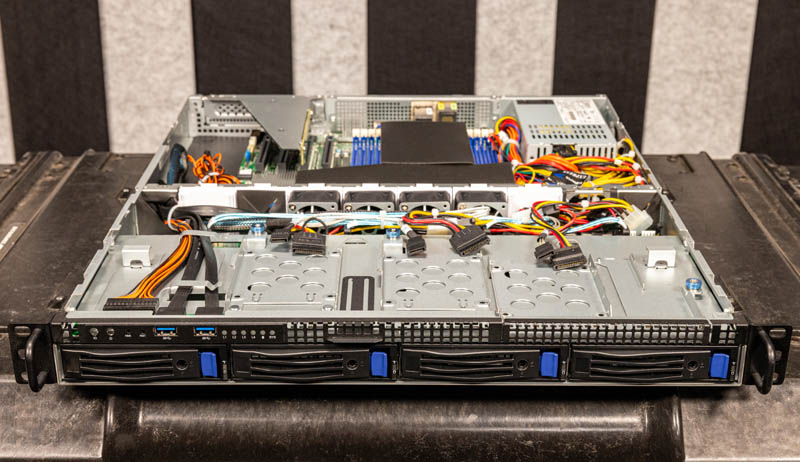
The front of the system has the normal status LEDs, power and reset buttons as well as two USB ports. There is even a service tag. There are four 3.5″ bays and a place for a slim optical drive. This 4x 3.5″ configuration is very popular in the segment. While one could probably convert some of these to SAS, realistically in this market SATA reigns so these drives are targeted at SATA drives.
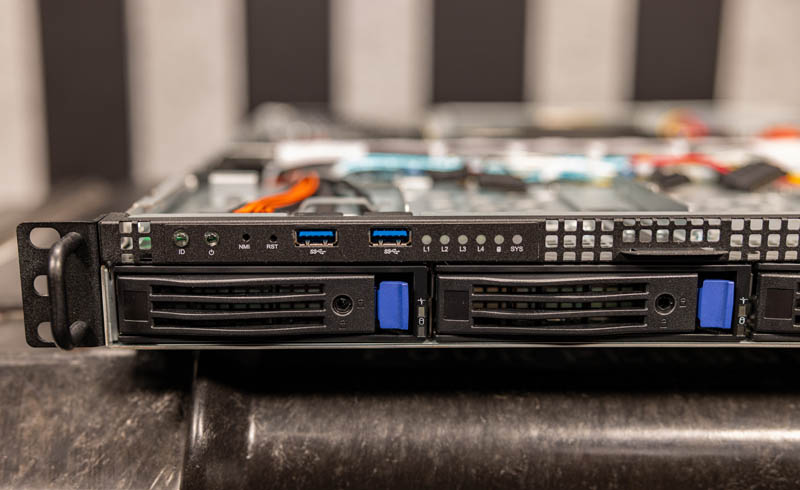
One nice feature is that ASRock Rack has tool-less drive trays here. Tabs on each side mounting point keep the drives in place, then there is another tab on a bottom mounting point. This made drive installation a breeze.
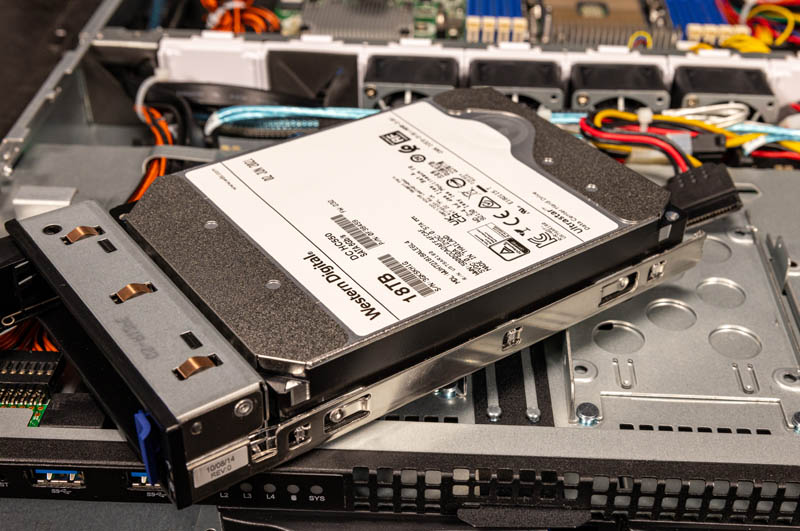
You may see InWin in some of the photos. ASRock Rack, understandably usually uses chassis from dedicated chassis vendors. Our best guess is that this is similar to the InWin IW-RS104-02SN but with a few differences for ASRock Rack’s system (e.g. the PSU.)
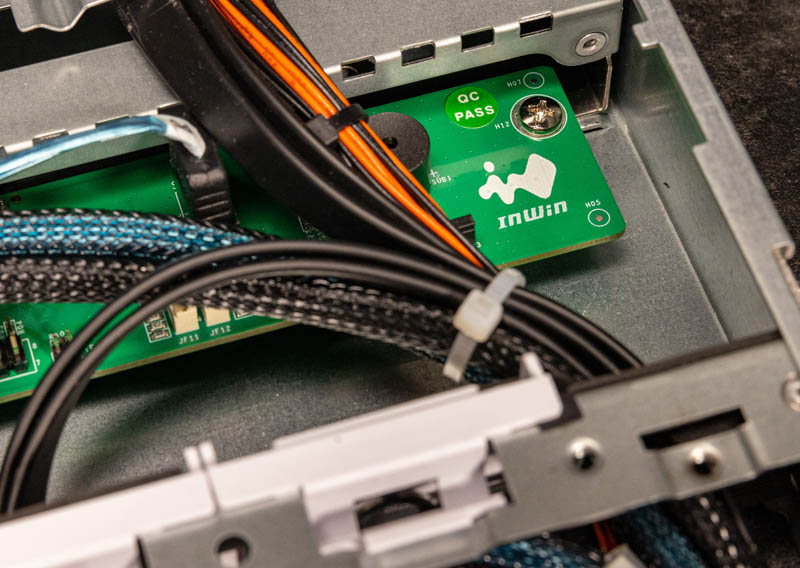
The rear of the system has a fairly simple layout that is common in this segment.
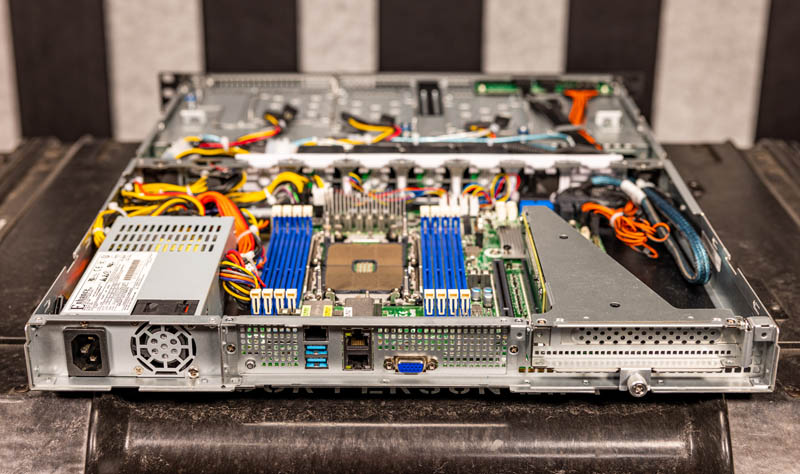
On the left, we have a single power supply. The single PSU is very common in the low-cost hosting market.
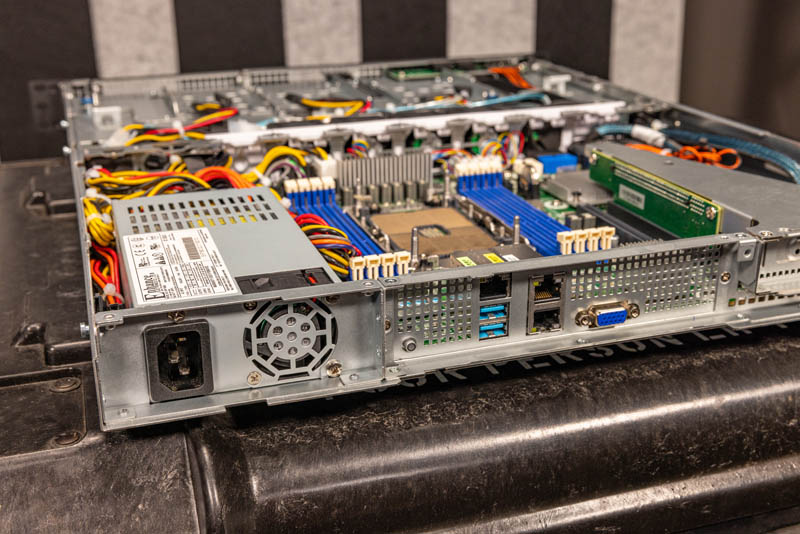
This is a 600W unit that ASRock Rack says on their spec page should be an 80Plus Platinum rated unit. We wish that that marking was on the PSU itself.
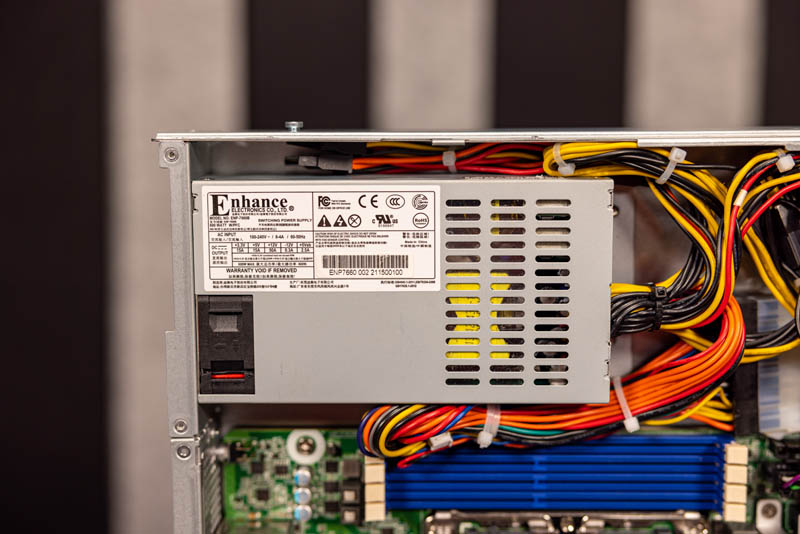
Since this is a non-redundant power setup, that also means we do not have a power distribution board. Instead, power is cabled to the motherboard. One small, but interesting fact here is that the motherboard does not have a 24-pin ATX power connector, so that connector is being adapted for this platform.

On the other side, opposite the PSU is the full-height PCIe expansion slot.

This is serviced by a PCIe Gen4 x16 riser. PCIe Gen4 is a big update in this generation. For this market, adding PCIe add-in cards is not overly popular, so there is a single slot solution even though the motherboard has more.
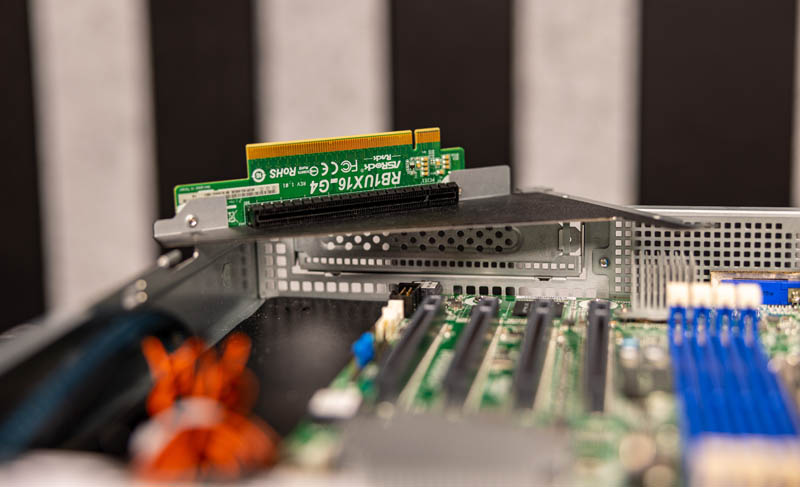
The rear of the unit has two USB 3.2 Gen1 ports and a VGA port for KVM cart access.

Above the USB port is the out-of-band management port. This is powered by an ASPEED AST2500 BMC solution. There are then two 10Gbase-T ports that are powered via an Intel X710-AT2 NIC that is under the silver heatsink near the AST2500. That X710 solution is a fairly high-end NIC solution for a cost-optimized server.
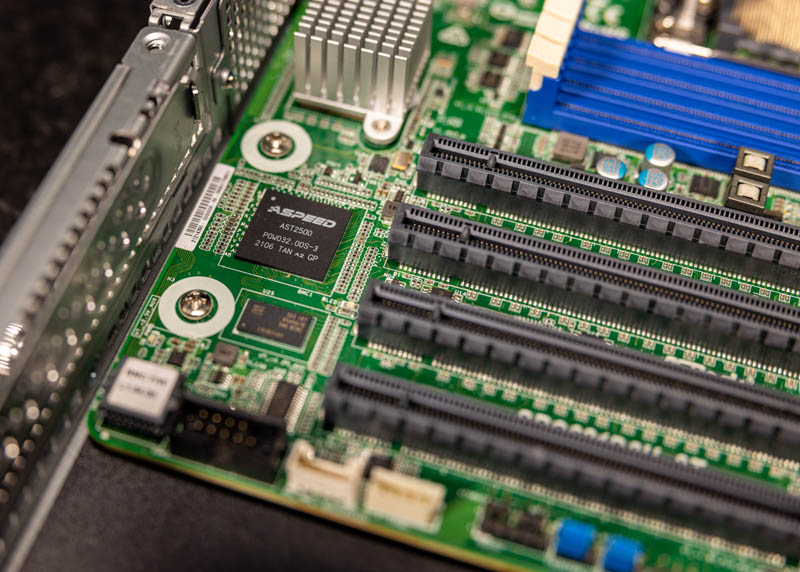
In true STH fashion, before we get to the internal overview, there was one small feature that was absolutely surprising. The InWin case has a surprisingly nice latching mechanism. Usually in this segment, servers have screws holding the top in place. This was functional and also very easy to operate. It was absolutely a pleasant surprise.
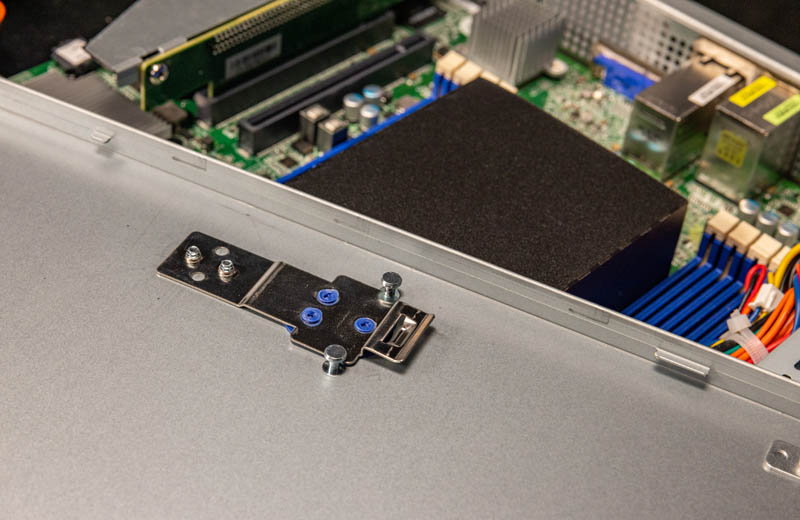
Next, let us get inside the system to see how it works.





With all those bits hanging off the PCH it’d be great to see some tests of internal bandwidth, identify if there are bottlenecks.
Say you had an A10 GPU in the slot and it was slurping data from elsewhere via 10Gb ethernet, and some other process is beating the heck out of an NVME SSD in the m.2 slot, and a third process is having a strong exchange of views with a collection of SATA SSD configured as an mdraid RAID 0.
Situations like that. Can that CPU to PCH link keep up, or is the system actually not capable of heavy multitasking work?
Maybe I need to know more about the tests, eh? Compiling the kernel, that’s pretty straightfoward.
What is the nature of the Mariadb test? How many queries in flight, how many spindles, how many rows scanned? How complex are the queries? Mariadb seems like the only one that might be capable of a somewhat whole system test, though probably not so much the ethernet IO.
C-Ray, ssl, 7zip are almost pure CPU tests. I’d be pretty surprised if the platform made any difference.
How’s the depth on the rail kit? We now have a small fleet of the 1U2LW-X570/2L2T units, and the fact the rail kit is a few inches too short for full-depth racks continues to irritate the hell out of me.